Case Study
Share this
article
Gateshead Millennium Bridge
-
cable stayed
tilting opening footbridge
-
staged construction analysis
-
nonlinear dynamic analysis
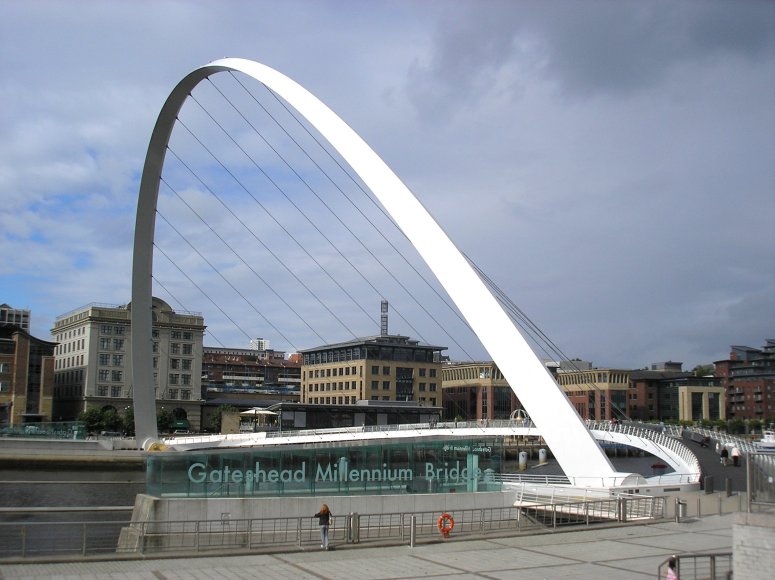
Gateshead Millennium Bridge is
the world's first and only tilting bridge, and was designed
by Ramboll
with Wilkinson
Eyre. Made of steel and designed with the aid of LUSAS Bridge
analysis software, the bridge stands 45m high and spans 105m
across the River Tyne to provide a link for pedestrians and
cyclists between the newly revived Newcastle quayside and the
Gateshead quayside opposite.
Overview
|
Whilst
small river craft can sail beneath the bridge, for larger craft
the cable-stayed double arched structure pivots at the abutments
through an angle of 40 degrees to give the 25m navigational
clearance as specified by the client, Gateshead
Borough Council. Powered by eight electric motors, it takes
approximately four minutes to rotate the 850 tonne dead weight
of the structure to its fully open position. When raised the
suspension cables lay horizontal holding the pair of arches
together. Huge 14 tonne castings on
either side support bearings which withstand the outward and
radial thrusts imposed.
The130m long bridge
deck is parabolic in elevation and of steel box section that
tapers in plan towards the centre of the deck. It carries a
pedestrian footway that varies from 3m to 5m in width as well as
a 2.5m cantilevered cycleway. The main arch is also parabolic in
shape and tapers both in plan and elevation.
Modelling
To model the structure in LUSAS
two-noded 3D bar elements, 3D engineering thick beams, and
corresponding 3D joint elements were used. Detailed analyses carried
out included: linear static, frequency (eigenvalue) extraction,
buckling (eigenvalue) analysis, and staged construction using a
nonlinear analysis with a linear elastic material. Staged
construction facilities in LUSAS allow a complete model to be built
letting users activate or deactivate selected elements to suit the
stage of construction being considered. It is particularly suited to
cable stayed structures of this type where prestressing of the cables
using initial stress or strain, and replacement or severance of cable
stays is to be investigated.
|
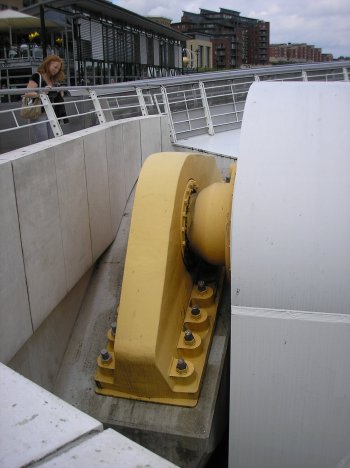
|
Shapour Mehrkar-Asl, one of the
engineers on the project said, "The forces and displacements
produced from the LUSAS analyses were used to decide upon the design
and staged construction method". He continued, "The
calculation of the initial forces in the tendons to give the required
profile for the bridge deck, allowing for any camber, were used in the
staged construction analysis, and
were an essential part in the
design of the bridge."
|
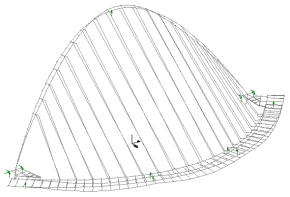
|
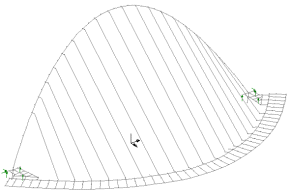
|
| Staged
construction on temporary supports before stressing of the
stays |
Completed
structure with all stays stressed and all temporary supports
removed |
Staged construction analyses were also
carried out to investigate the lifting and transporting of the bridge
from the construction yard, to its permanent position. Elements
representing the lifting assembly can be seen on the LUSAS model
shown.
|
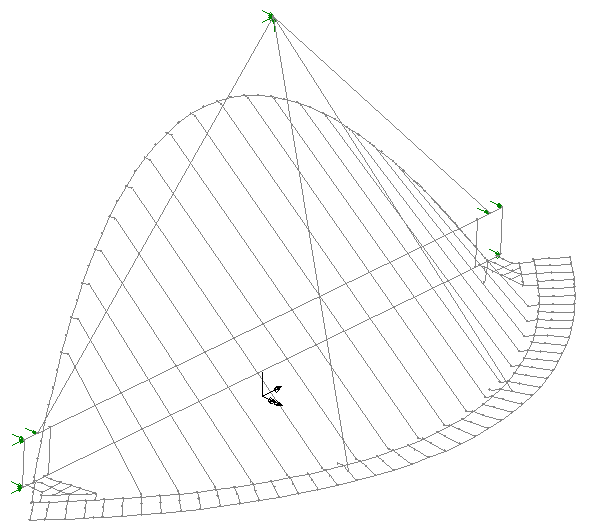
|
|
Model showing
bridge lifting assembly |
Dead, live, wind loading,
and temperature effects were also assessed, with rigid supports being
used for all models with the exception of the opening and closing
model which required spring supports with contact gap elements.
Dynamic
analysis
A dynamic analysis of the opening and
closing sequence using step-by-step integration was also carried out.
For this analysis, elements were amended to allow for a 40 degree
rotation of the whole model with contact joint elements being used to
allow for support separation. In addition, the 3D engineering thick
beam elements were replaced with nonlinear 3D engineering thick beams
to accommodate the rotation in the model.

According to Shapour
Mehrkar-Asl, "Using LUSAS was essential on the design of this
bridge because a full 3D staged construction analysis to model the
construction sequence, and a step-by-step integration with large
angles, to model the opening and closing sequence was
required".
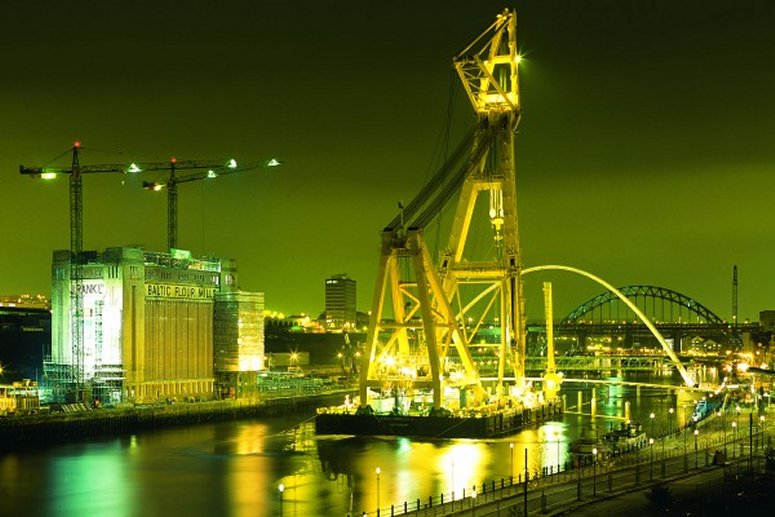
The fully assembled
bridge was lifted into place by the Asian Hercules II, one of the
world’s largest floating cranes and officially opened in May 2002.
Its construction won the architects
Wilkinson Eyre the 2002 Royal Institute of British Architects (RIBA)
Stirling Prize and won Gifford the 2003 Institution of Structural
Engineers Supreme Award.
More
pictures, additional information and live web cams are available at:-
"Using LUSAS was essential on the design of this
bridge because a full 3D staged construction analysis to model the
construction sequence, and a step-by-step integration with large
angles, to model the opening and closing sequence was
required."
Shapour Mehrkar-Asl,
Project Engineer, Ramboll
Share this
article
Find out more
Other LUSAS Bridge case studies:
|